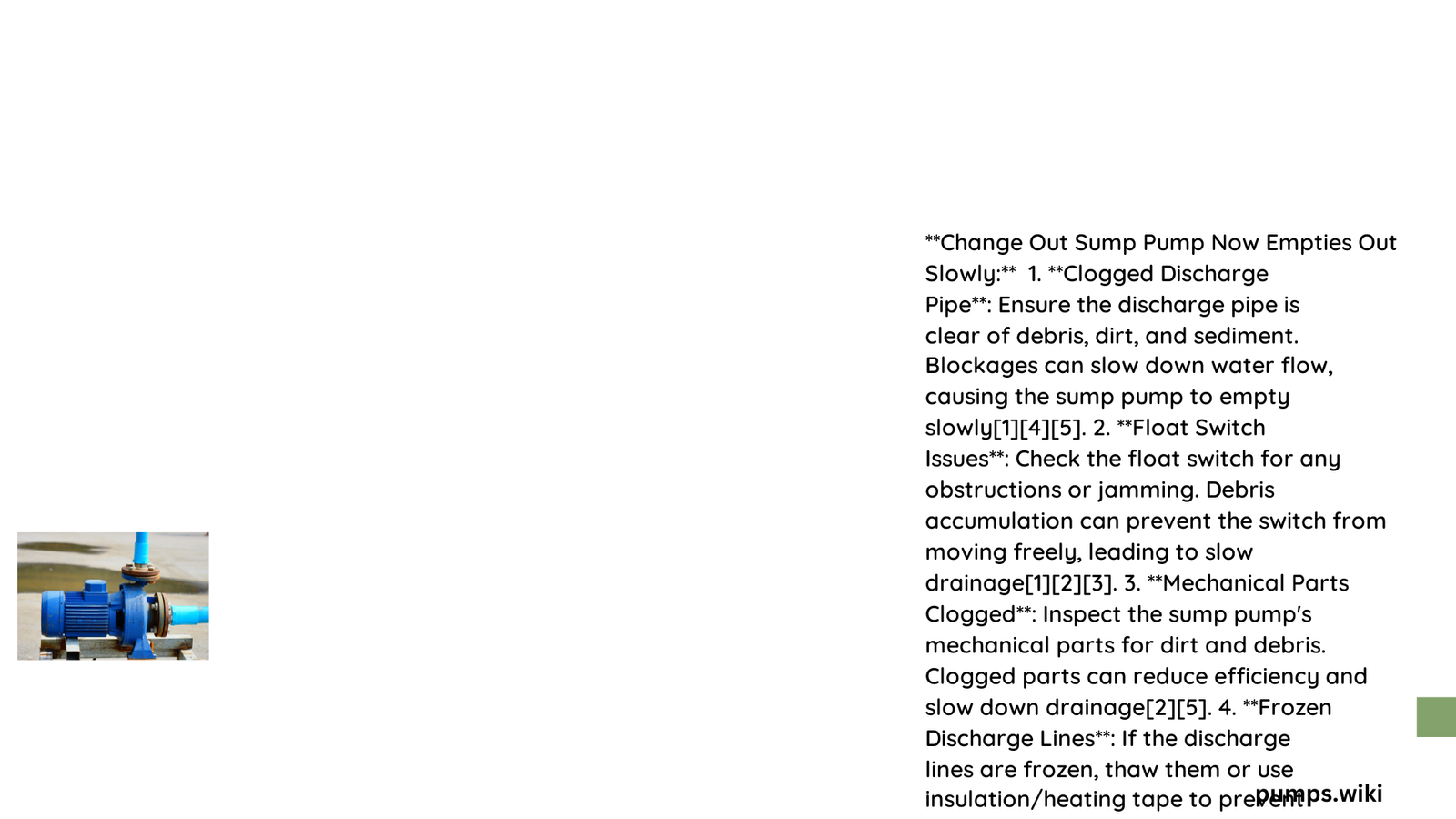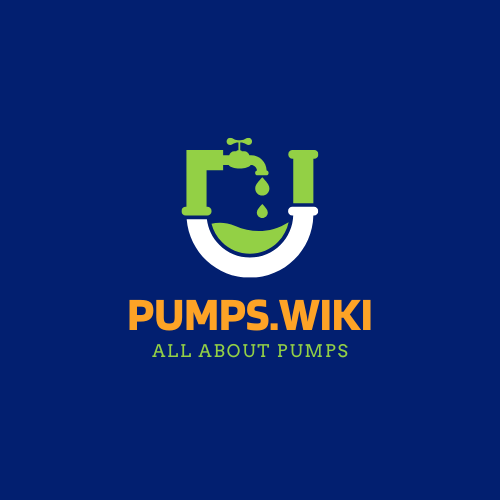When your sump pump starts emptying water at a frustratingly slow rate, it signals potential underlying issues that demand immediate attention. Slow drainage can compromise your basement’s protection, risking water damage and potential flooding. Understanding the root causes and implementing strategic solutions becomes crucial for maintaining a reliable water management system.
What Causes Sump Pump to Empty Water Slowly?
Why Do Discharge Pipes Become Blocked?
Discharge pipe blockages represent a primary culprit behind slow sump pump performance. These obstructions can develop from multiple sources:
- Debris Accumulation: Dirt, rocks, and organic materials
- Sediment Buildup: Mineral deposits and soil particles
- Ice Formation: Seasonal freezing can restrict water flow
Quantitative Impact of Blockages
| Blockage Type | Flow Rate Reduction | Potential Damage Risk |
|---|---|---|
| Minor Debris | 30-50% Reduction | Low |
| Significant Obstruction | 50-80% Reduction | High |
| Complete Blockage | 90-100% Reduction | Critical |
How Can Impeller Problems Affect Drainage?
The impeller serves as the critical component responsible for water movement. When compromised, it dramatically reduces pump efficiency:
- Mechanical Wear: Blade degradation
- Debris Interference: Foreign object entanglement
- Corrosion: Material breakdown
What Role Does the Check Valve Play?
A malfunctioning check valve creates significant drainage complications:
- Prevents backflow
- Maintains consistent water direction
- Ensures pump efficiency
Diagnostic Steps for Slow Sump Pump Drainage

How to Inspect Discharge System?
Visual Examination Checklist:
– Verify pipe alignment
– Check for visible obstructions
– Measure pipe diameter
– Assess pipe material condition
What Cleaning Techniques Restore Performance?
Professional cleaning involves:
– Mechanical pipe brushing
– High-pressure water jetting
– Chemical descaling
– Comprehensive system flushing
Advanced Troubleshooting Strategies
When Should You Replace the Entire Pump?
Consider replacement if:
– Pump age exceeds 7-10 years
– Repair costs approach 50% of new unit
– Consistent performance issues persist
How to Select Optimal Replacement Pump?
Selection Criteria:
– Gallons per minute (GPM) rating
– Basin size compatibility
– Power source requirements
– Manufacturer warranty
Preventative Maintenance Recommendations
What Regular Practices Enhance Longevity?
- Quarterly system inspections
- Annual professional maintenance
- Implement protective screening
- Monitor groundwater levels
Cost Considerations
Replacement Investment Range:
– Basic Submersible Pump: $200-$500
– Advanced Models: $500-$1,200
– Professional Installation: $100-$300
Technical Specifications Matter
Pump Performance Metrics
- Optimal Flow Rate: 20-30 GPM
- Typical Lifespan: 5-10 years
- Power Consumption: 0.5-1.5 HP
Final Recommendations
Addressing slow sump pump drainage requires systematic approach, combining technical knowledge and proactive maintenance. Regular monitoring, timely interventions, and understanding system dynamics ensure reliable water management.
Pro Tip: Document each maintenance activity, tracking pump performance over time helps predict potential future issues.
